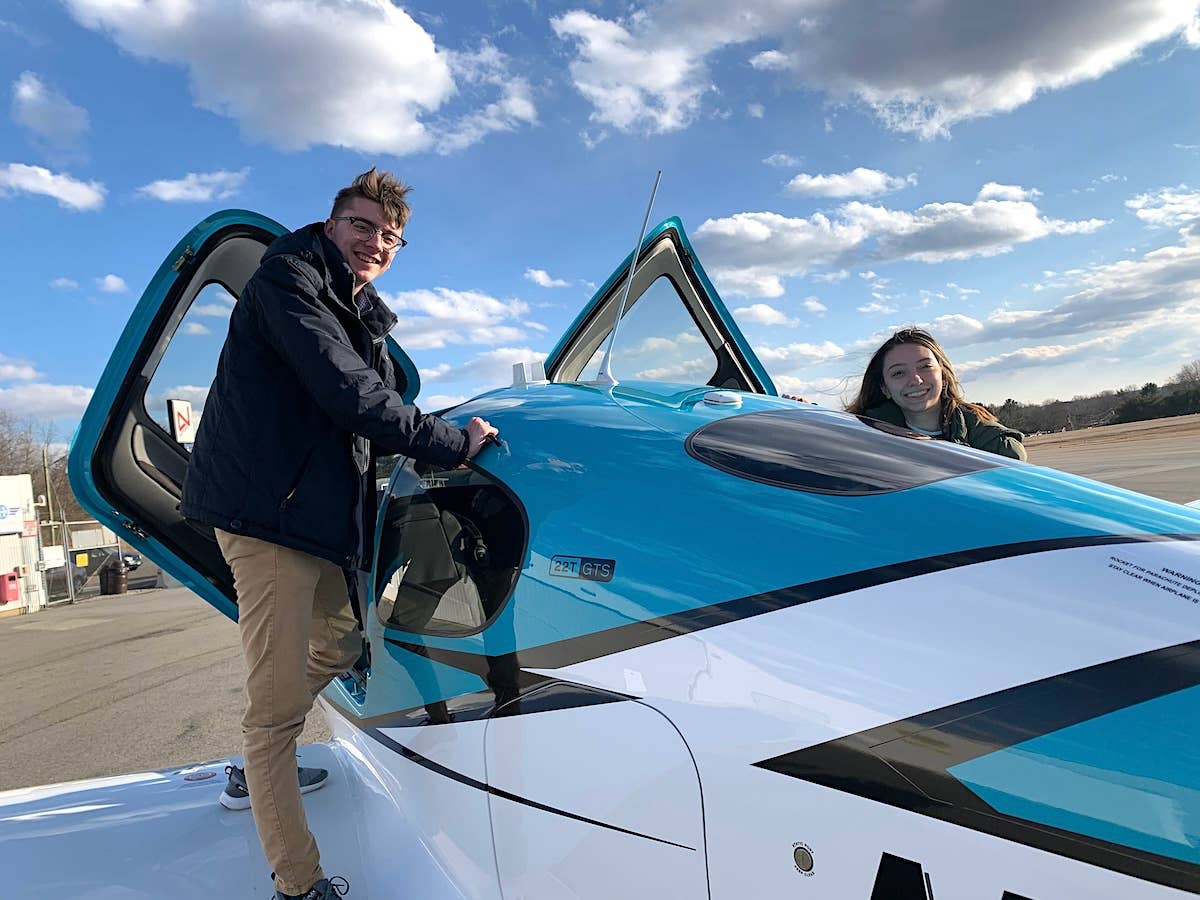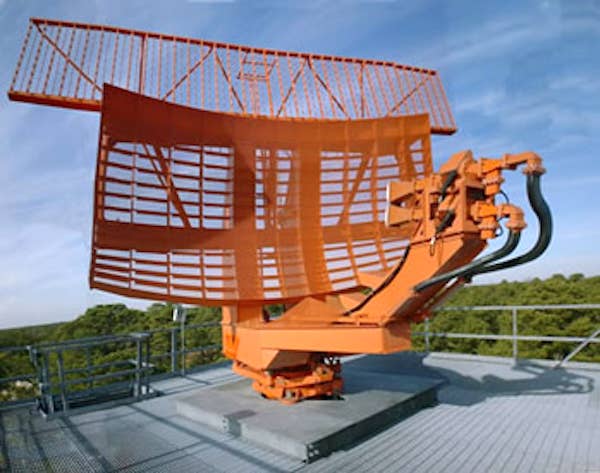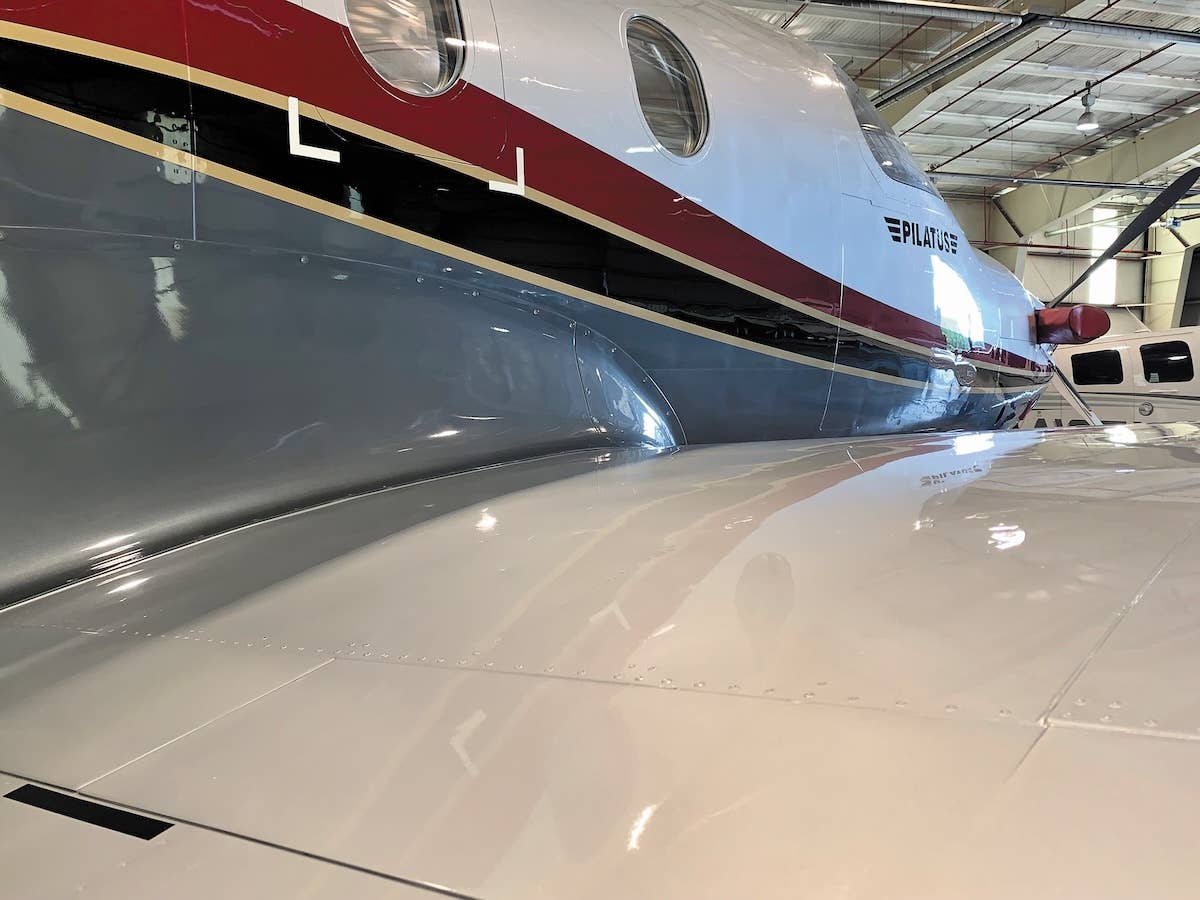Say Again? #20:Communications – The Top Ten
There are probably a lot more than 10 problems with pilot/controller communication. But as AVweb’s Don Brown tells us, if we could solve these 10, the Com frequencies would be a lot less congested, and things would be even safer.
Yes friends, it's that time again. I just had another "tape talk" so now it's your turn. I was less than pleased with mine, so I have some work to do. So do you.To bring a little order to the process I thought I'd make a "Top Ten" list of things we should do for better communication. It's not meant to be scientific, and because it covers such a wide array of pilots, from student to airline pilots, each one may not be about you specifically. But I bet you'll recognize yourself in more than one of them.
Number 10: Format
How you say something is almost as important as what you say. Simply reading back "the numbers" can often be less than desirable. For instance, I actually got this readback from a pilot one day.
"Ninety eight eleven twenty three eighty nine."
The pilot certainly read back "the numbers." When I heard them, though, it took me a few seconds to figure out it wasn't the lottery numbers for the day. Sorry, but I really don't have a few seconds to decipher a new code for every readback. Let's see what the AIM (Aeronautical Information Manual) has to say on the subject.
AIM 4-2-4. Aircraft Call Signs5. Air carriers and commuter air carriers having FAA authorized call signs should identify themselves by stating the complete call sign (using group form for the numbers) and the word "heavy" if appropriate.
The truth is, I could write an entire article on that one readback. But I won't. Just in case you're wondering (I know I was), the readback should have been:
"Descending to one one thousand, CLT altimeter two niner niner eight, Commuter twenty three eighty nine."
Number 9: Questions
I've picked up on something new lately. Well, it's probably not new but I'm just starting to notice it. Many times, when a pilot answers a clearance with a question he forgets to use his call sign. Examples:
"Descending to eleven, two nine nine eight can we get direct SHINE?""Cleared visual approach do you see any traffic between us and the airport?"
There are a million questions being asked these days. That, in of itself, is a major problem. Maybe there's something in the water because I'm noticing controllers (including myself) doing the same thing. "Request control for lower," has somehow turned into, "Can you release him for lower?" I'll deal with the controllers some other time. What's important to remember at the moment is that questions often depend on voice inflection. You don't want to depend on voice inflection too much when you're using a static-filled radio.
Number 8: Direct vs. "Cleared to"
During my tape talk this year I happened to be holding for CLT. Another new phenomenon popped up.
"Airliner123 cleared to the SHINE intersection, hold northwest as published, expect further clearance at one five one zero."
The pilot read it back correctly (at least I thought he did) and proceeded to turn 30 degrees right, direct to SHINE. One again, advanced navigation rears its ugly head. When I said "cleared to" I wasn't trying to change the pilot's assigned routing. I was just stating his new clearance limit. I won't claim to know what the pilot was thinking but I can see how easy it would be to confuse the two different clearances.Fortunately there wasn't any conflicting traffic in this instance. I wouldn't count on being lucky about it too often though. Holding patterns around airline hubs tend to get used on a very regular basis. The traffic in and out of other airports in the vicinity are generally routed around the STARs and their associated holding patterns. If you turn off the STAR, chances are you're turning toward some traffic.
Number 7: Ride Reports
Let me say right up front that this is a subject that I find exceedingly frustrating. I mean it makes me downright mad. We've let this problem get so far out of hand that it's now starting to affect the safety of the system.Attention all pilots: Controllers get it. We know you want to know about any bad rides.We (controllers) do not have time to give each and every airplane we work an in-depth, detailed ride report. It's simply impossible, especially in regard to airline operations. That includes the en route portion of your airline operation.First, lets look at what is required of controllers.
FAA 7110.65 2-6-4. Weather and Chaff Servicesa. Issue pertinent information on observed/reported weather or chaff areas...b. In areas of significant weather, plan ahead and be prepared to suggest, upon pilot request, the use of alternative routes/altitudes.NOTE -- Weather significant to the safety of aircraft includes such conditions as tornadoes, lines of thunderstorms, embedded thunderstorms, large hail, wind shear, moderate to extreme turbulence (including CAT), and light to severe icing.
Just in case the FAA's wordsmiths make your eyes glaze over, let me edit this for the case of ride reports. Controllers are required to "issue pertinent information" on "reported weather ... " "In areas of significant weather" (that would be "moderate to extreme turbulence") we will be "prepared to suggest ... the use of alternative altitudes." In other words, we will tell you about reported moderate to extreme turbulence. We are well aware that this represents a hazard "to the safety of aircraft" and we treat it as such.You can read that whole section in the 7110.65 and you're not going to find the phrase "light chop." That doesn't mean we aren't going to tell you about it (assuming we know about it) and it doesn't mean we don't think it "pertinent." Every controller I know, without fail, takes the comfort of your passengers seriously. But we take their safety much more seriously. Vectoring aircraft for separation takes priority over ride reports of light chop.I've seen sectors get completely out of control because the controller couldn't maintain control of the frequency due to ride reports and requests for ride reports. In almost all cases the worst report was moderate chop. We know it's uncomfortable (we fly too) and we'll do our best to get you out of it. But let us do it safely.When we squeeze in a warning to you about the ride on a busy frequency, don't take it as an opportunity to start asking twenty questions (see Number 9) and make a bad situation worse. I swear no matter how hard I try (and I do try) to give an accurate and complete ride report the pilot can't accept it without coming up with a question. If I tell him FL350 (flight level) and FL280 is smooth he wants to know about FL390. Stop the madness and I'll stop this rant.
Number 6: Key Words
The omission of what I call "key words" continues to be a problem. I might as well include the substitution of key words while I'm at it. "Descending" is a key word. So is "climbing." "Down to" or "up to" are not suitable substitutes.We had an Operational Error a while back that was a direct result of "up to." The controller was walking up an aircraft underneath other climbing traffic and issued the aircraft FL190 and then FL200. The readback was "up to one nine" and then "up to two zero." Except it should read "up two two zero." Because that's what the pilot did. He climbed to FL220.In case that didn't hit you, "flight level" is a key word also. There are dozens of others. Level, maintain, fly, intercept, traffic, request, in sight, etc. Each one is important depending on what format (see Number 10) it's used in. What bothers me is that pilots and controllers both are dropping or substituting these key words with alarming regularity. You may not think proper phraseology is cool but neither is this.
"Bizjet123, possible pilot deviation. Advise you contact Atlanta Center Quality Assurance 770-555-1234."
That's one piece of standard phraseology I never want to use.
Number 5: Mumbling
I know. I'm embarrassed to even have to include it on the list. But there is it. It's even in the AIM although it's couched in more diplomatic terms.
AIM 4-2-2. Radio Techniquec. The microphone should be very close to your lips and after pressing the mike button, a slight pause may be necessary to be sure the first word is transmitted. Speak in a normal, conversational tone.
You won't believe it but those may be the two most important sentences in the AIM. Those who have read my previous articles probably already see what's coming. The rest of you I'll let ponder on that while we move along.I read a study on pilot/controller communications that claimed a full one-third of all ATC transmissions are some form of "Say again?" Think on that a moment because that is a really big percentage. Thirty-three percent more frequency time if we could just communicate clearly? Wow! What would we do with all the extra time? Ask for more ride reports?
Number 4: Call Signs
I know, I know. This one is unbelievable too but let me see if I can't get your attention anyway. Tell me, real quick, what's my call sign? How long did it take for you to come up with "Atlanta Center"? Have you ever thought about it that way?
"Jacksonville Center Airliner123 flight level three one zero.""Airliner123, Atlanta Center, this frequency in error return to your previous frequency."
I wish it worked that way. What we usually get is:
"(click)liner one twenty three three one zero."
That format (see Number 10) is a lot harder to figure out because not only did he forget to use my call sign, he also forgot "... a slight pause may be necessary to be sure the first word is transmitted" (see Number 5).Maybe the subject of call signs is a little more interesting than you thought. I know the marketing people (or whoever comes up with flight numbers) at the airlines are doing their part to keep the subject interesting. You wouldn't believe the number of similar call signs out there.Using only half your call sign just makes the situation worse. "One Twenty Three" isn't a call sign. I don't care if you're "November," "Bizjet," "Military," "Commuter," or "Airliner," but "One Twenty Three" isn't a call sign. Well, actually I do care. Oh, you see my point.Another point that comes to mind about using half your call sign is this: In reading the English language, we read from left to right. Your call sign is written in English (sort of) so we scan from left to right: AIR123, FTC123, WHN123, etc. When you use half your call sign (one twenty three), it forces us to try and scan from the middle to the right, then look back left and come up with the full call sign.
4-2-4. Aircraft Call Signsa. Precautions in the Use of Call Signs.1. Improper use of call signs can result in pilots executing a clearance intended for another aircraft. Call signs should never be abbreviated on an initial contact or at any time when other aircraft call signs have similar numbers/sounds or identical letters/number; e.g., Cessna 6132F, Cessna1622F, Baron 123F, Cherokee 7732F, etc.
The example the AIM gives right after that excerpt is really interesting if you want to click on that link. It actually happened to me one time. Yes, that is a shameless ploy to get you to click on the link. Bookmark it while you're there, will you?
Number 3: Requests
I've already mentioned (numerous times) that the sheer volume of requests controllers are getting on the frequency is detrimental so I'm not going to dwell on it. What I will dwell on is how to make the process more efficient.
AIM 4-2-3. Contact Proceduresc. Subsequent Contacts and Responses to Callup from a Ground Facility.Use the same format as used for the initial contact except you should state your message or request with the callup in one transmission.
In case the "format (see Number 10) as used for the initial contact" has slipped your mind...
"Atlanta Center, Cherokee two two three four five.""Atlanta Center, Cessna one two three four five request VFR advisories.""Atlanta Center, Bizjet one twenty three request IFR Dekalb-Peachtree.""Atlanta Center, Airliner one twenty three leaving flight level two four zero climbing flight level three one zero."
So a request would go something like this:
"Atlanta Center, Cherokee three four five request vectors ILS runway 24 Hickory.""Atlanta Center, Airliner one twenty three request direct Jackson."
It does not go like this after your initial contact.
"Atlanta Center, Airliner one twenty three.""Airliner one twenty three, Atlanta, go ahead.""Can we get direct Newark?"
Number 2: Clipping
No, I am not talking about a haircut. Remember back at Number 5 I told you that these two sentences might be the most important ones in the AIM?
AIM 4-2-2. Radio Techniquec. The microphone should be very close to your lips and after pressing the mike button, a slight pause may be necessary to be sure the first word is transmitted. Speak in a normal, conversational tone.
"A slight pause may be necessary to be sure" that you don't "clip" the first word you say. How you format your transmission (Number 10), and where you place your call sign (Number 4), or whether or not you are using key words (Number 6) makes all the difference in the world on how serious a problem this becomes. I'll let the fact that I've saved it for Number 2 speak for how serious I view the problem.
"(click)teen thousand Airliner one twenty three."From the FAA 7110.65: 2-4-17. Numbers UsageState numbers as follows:b. Altitudes or flight levels:1. Altitudes. Pronounce each digit in the number of hundreds or thousands followed by the word "hundred" or "thousand" as appropriate.NOTE -- Altitudes may be restated in group form for added clarity if the controller chooses.
That one "Note," saying we can restate altitudes in group form, has caused more problems that you could ever imagine. It's really ironic because the note was inserted into the 7110.65 by a fellow for whom I have the utmost respect. We were having a terrible time with pilots confusing "one one thousand" with "one zero thousand" and controllers missing it on the readback. That note was inserted as a fix, allowing us to say "one one thousand, eleven thousand" for clarity. And it worked.But now I see controllers forgetting that the note says "restated" and going right to the "teens". Thirteen, fourteen, fifteen, sixteen and seventeen thousand. What a mess. And pilots have followed the controllers right down the road to ruin.Of course, if I could get you to format (Number 10) your readback properly and use the key words (Number 6) then the problem would be mitigated.
"(click)ving seventeen thousand, descending fifteen thousand Airliner one twenty three."
I don't like it, but at least I wouldn't have to go back and get you to read it back again. Because that leads to problem Number 1.
Number 1: Frequency Congestion
There's really not much left to say about the number-one problem, is there? If you will format your readbacks carefully, keep the questions to a minimum, let us give you the ride reports we have as soon as we can, use the key words found in standard phraseology, speak clearly and not mumble, use your call sign and use it correctly, keep your requests to a minimum while making them efficiently and try not to clip off the beginning of your transmissions while doing all the above ... then frequency congestion is largely solved.I'd be willing to bet that every pilot reading this article remembers a time when they couldn't even get checked on the frequency because it was so busy. It'd be almost as safe a bet that every pilot has had an incident where they needed to deviate around a thunderstorm and couldn't get on the frequency to advise the controller they needed to turn. I really don't think I need to convince you of the problem and how serious it can be.Thunderstorms, bad rides and hub operations all lead to frequency congestion. There's nothing you or I can do to solve those. We can do something about the other causes of frequency congestion. I hope this article has given you some ideas on how you can improve your communication skills.I'd also like to take this opportunity to offer you an invitation. Every year, the National Air Traffic Controllers Association hosts a seminar on ATC safety issues. It's conveniently (for me) entitled "Communicating For Safety." Just click on the link to find out more.This year Communicating for Safety will be held in Denver on April 29th and 30th. If you can make it, I hope you'll come. I'll be there and so will a lot of other people interested in keeping this system the safest in the world.Have a safe flight.






